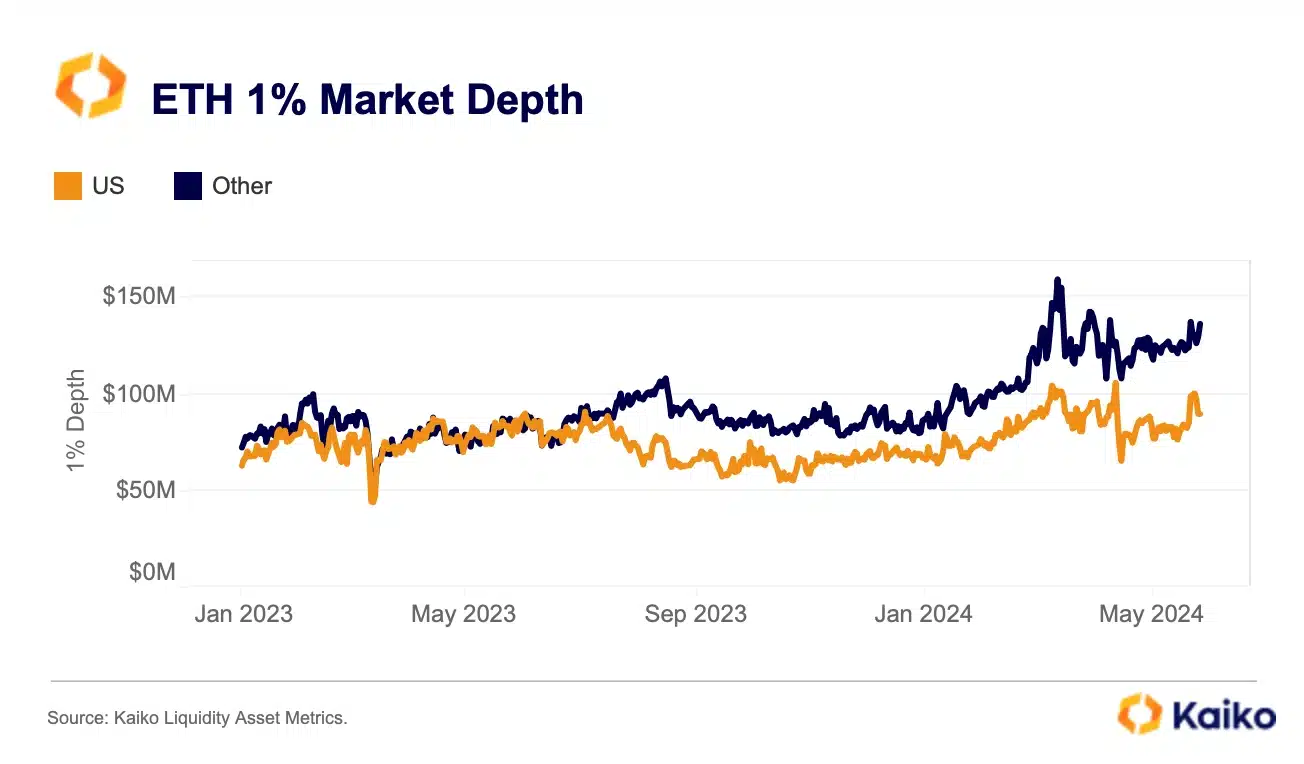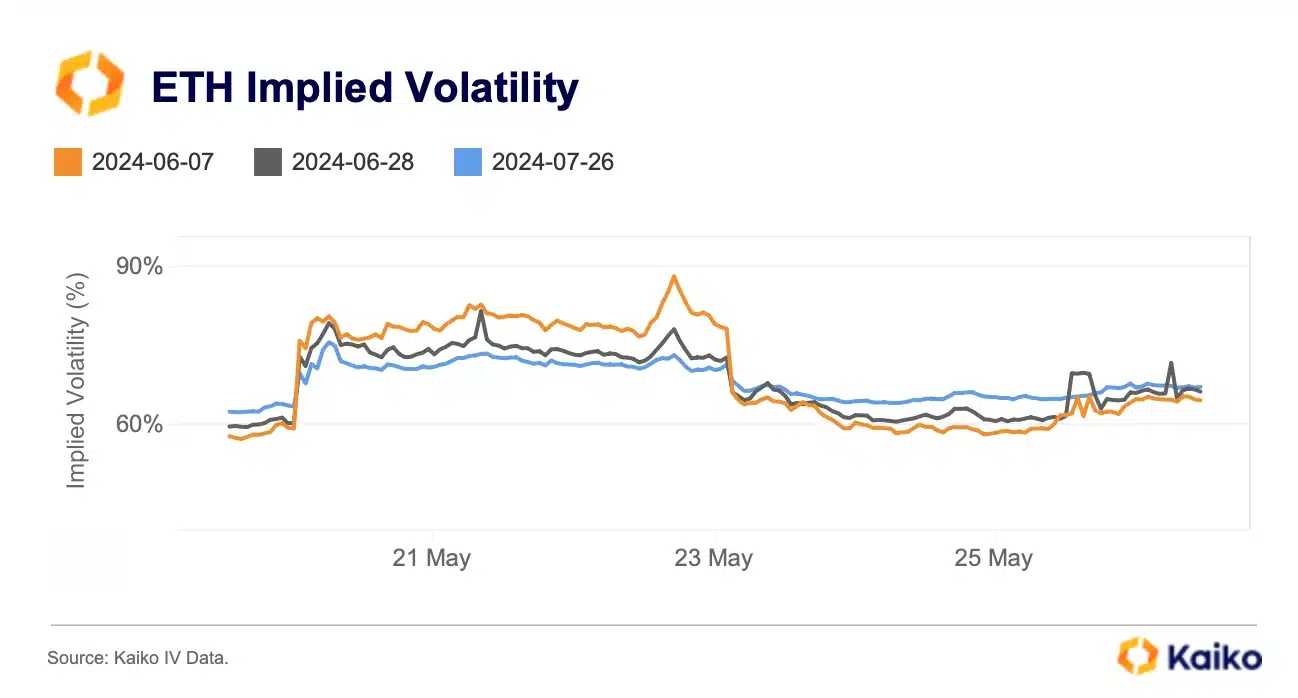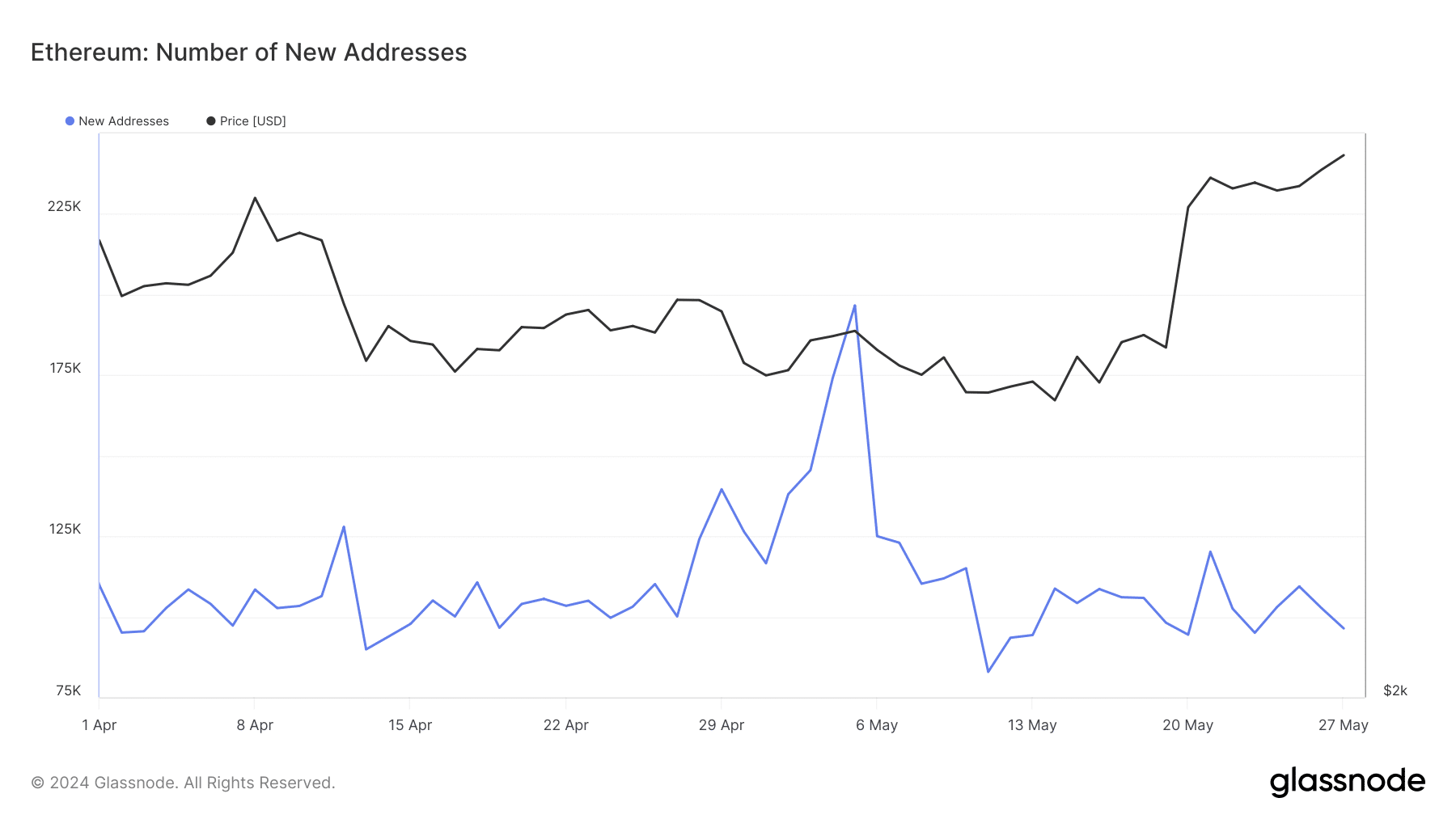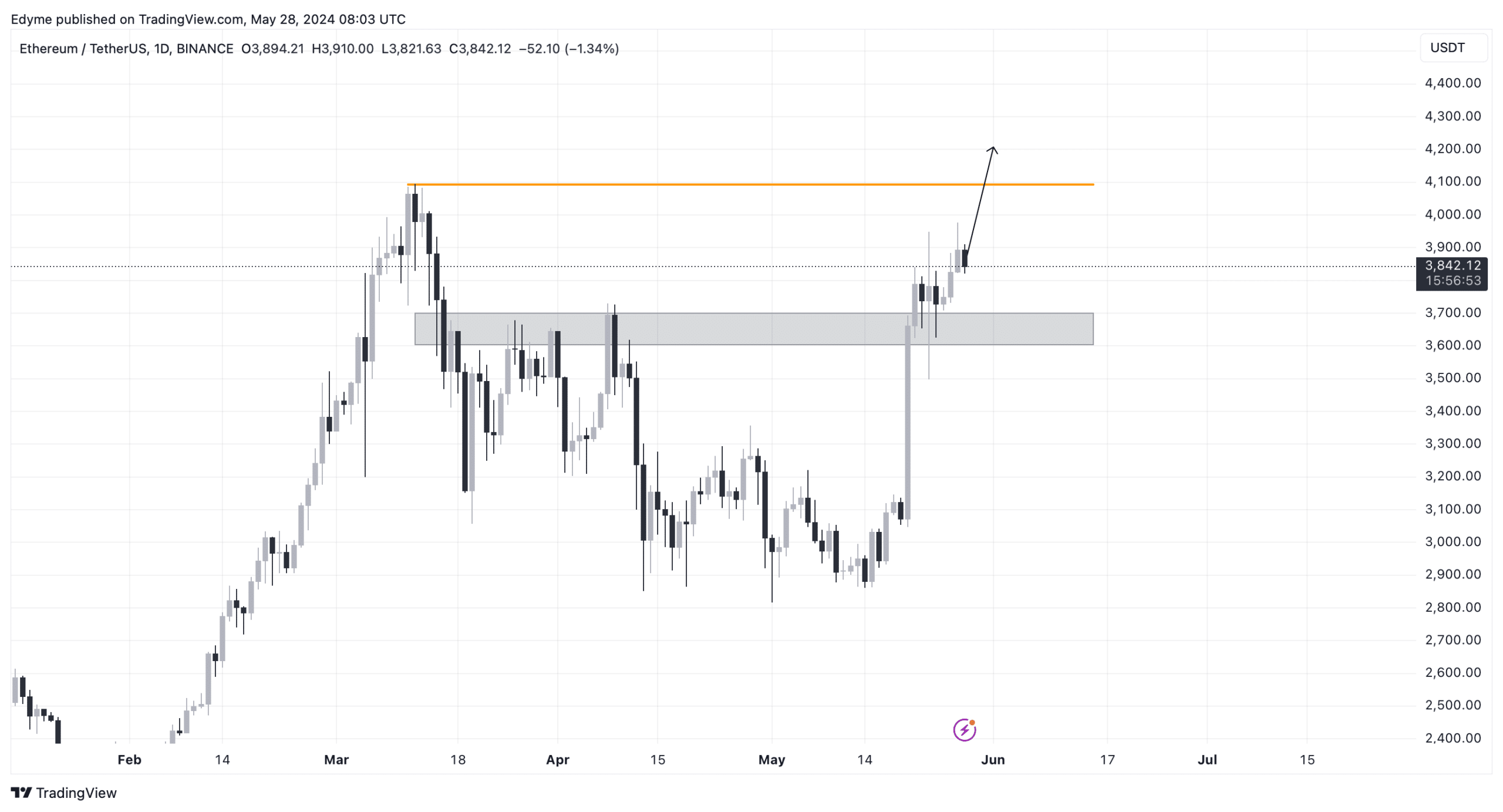- Ethereum’s recent retracement follows a significant price increase, with ETF approvals considered bullish.
- Market volatility and trading activity indicate a complex, potentially bullish future for Ethereum.
Ethereum [ETH]a leading cryptocurrency and blockchain platform, has seen significant market activity in recent weeks.
After a remarkable rally of around 31.5% in two weeks, which saw its value rise to over $3,900, Ethereum has experienced a slight retracement, reaching around $3,845.
This fluctuation comes amid broader market movements and regulatory developments that could impact the asset’s future trajectory.
Crypto research firm Kaiko has shine light on these developments, with particular attention to the potential impact of the Approval by the US Securities and Exchange Commission (SEC). spot Ethereum ETFs.
This approval is seen as a positive step for Ethereum, despite possible short-term market adjustments.
The implications of such regulatory improvements extend beyond direct price effects, potentially shaping Ethereum’s position in the financial markets and significantly impacting investor sentiment.
Ethereum: Market Reactions
Kaiko’s analysis shows that the introduction of Ethereum ETFs could initially cause selling pressure due to potential outflows from existing investment vehicles such as Grayscale’s Ethereum Trust (ETHE).
The company currently manages more than $11 billion in assets.
Historical data from similar scenarios suggested that such an outflow could have a significant impact on daily trading volumes.
However, as we have seen with Bitcoin ETFs, the initial outflows were eventually offset by subsequent inflows, indicating a possible stabilization after the launch of the ETF.
Will Cai, Head of Indices at Kaiko, highlighted the broader implications of the SEC’s decision, calling it a declaration of Ethereum’s commodity status rather than a certainty.
This classification not only impacts Ethereum trading and custody, but also sets a precedent for the regulation of similar tokens in the US, likely promoting a more stable regulatory environment.
Meanwhile, according to Kaiko, Ethereum’s market depth on centralized exchanges at the time of the report was approximately $226 million – 42% lower than the level before the FTX collapse.
Only 40% of these are focused on US exchanges, down from around 50% in early 2023.

Source: Kaiko
The research firm noted:
“Overall, even if near-term inflows disappoint, the approval has important implications for ETH as an asset, removing some of the regulatory uncertainty that has weighed on ETH’s performance over the past year .”
Volatility insights
Further insights from Kaiko highlighted Ethereum’s volatility trends. Notably, Ethereum’s implied volatility rose dramatically in late May, indicating increased market activity and investor interest.
This was accompanied by a reversal of the volatility structure, with short-term volatility exceeding long-term expectations – a common indicator of market stress or significant trading activity.

Source: Kaiko
In the derivatives markets, Ethereum has shown remarkable momentum.
Funding rates for Ethereum perpetual futures saw a sharp increase from the lowest in more than a year to a multi-month high in just a few days.
At the same time, Open Interest in these futures reached a record $11 billion, indicating robust capital inflows and increased trading activity.

Source: Kaiko
Despite these promising signals, some figures indicate caution.
Is your portfolio green? Check out the ETH profit calculator
AMBCrypto’s look at Glassnode’s data indicated a recent decline in the number of new Ethereum addresses, which could mean a slowdown in the influx of new participants into the network.

Source: Glassnode
However, our look at Ethereum’s daily chart showed that the asset recently turned a key resistance level into support, potentially paving the way for further gains and possibly breaching the $4,000 mark.

Source: TradingView